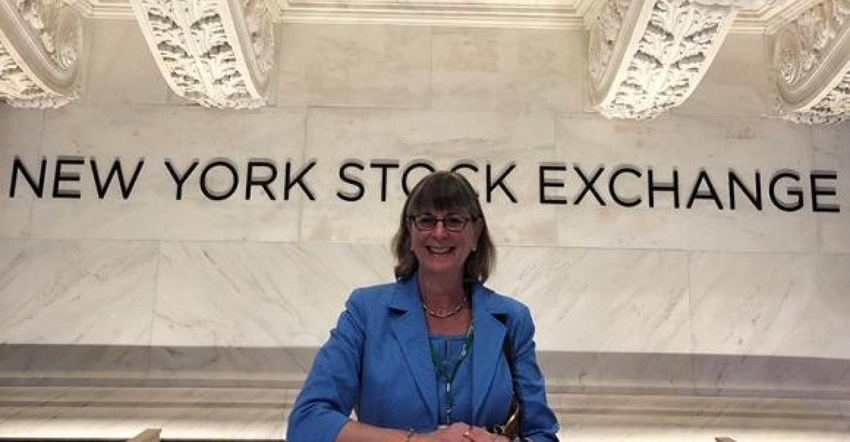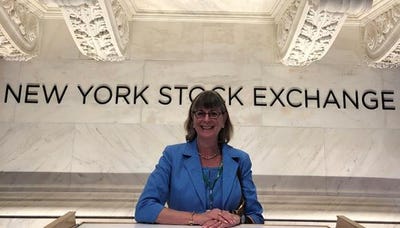Industry Buzz, Legislative Trends, Commodities and More from WasteExpo

WasteExpo returned live to Las Vegas. In this month’s edition of Business Report, we synthesize what we learned about the state of the solid waste industry and its players, as well as highlights from several of the conference education sessions.
Show Buzz
WasteExpo was well attended, with attendees expressing palpable enthusiasm and excitement at both being back and the state of the overall industry. Pricing was uniformly regarded as strong and disciplined, with a general consensus that the solid waste industry could (and is) able to price to cover rising inflation. The recent core inflation rate of nearly 4%, versus the sub-2% levels of recent years, was pointed to as a tailwind for 2022 pricing, given that anywhere between 30%-50% of the major companies’ revenues are tied to some type of pricing index. Volumes were described as “still coming up”, while a number of the participants we talked to called out April and May levels as particularly robust, indicating a strong seasonal upturn as well. Commercial volumes were described as anywhere between 85%-95% of pre-Covid levels, an improvement from the first quarter levels that several companies cited of between 70%-75%. Municipal solid waste (MSW) landfill volumes were often put at better than pre-Covid levels, though special waste is still recovering in a number of cases. Canada and New York City (NYC), unsurprisingly, were still cited as laggards, but several participants noted that it seemed like “a light had been switched on” in NYC over the past month. The 2021 lift in recycled commodity prices thus far was also noted as a strong tailwind, particularly among the small and mid-sized haulers. Inflation was a concern, but the biggest issue by far and for everyone was labor—driver shortages and material recovery facilities (MRF) workers in particular. Waste Connections (WCN) noted that they are down 4%-5% in headcount from where they would like to be. Sustainability and ESG principles came up more frequently this year, highlighting their growing importance, with Waste Management (WM), Casella Waste (CWST), and now Republic Services (RSG) calling them out as growth drivers. WM talked about the strong growth in its national accounts as a result. Bottom line, the outlook for upcoming second quarter results and expected full year guidance is generally for another “beat and raise”.
Although WasteExpo is always a hotbed of merger and acquisition (M&A) speculation and activity, there is no question that “the buzz” around acquisition activity intensified this year and dominated the overall show buzz. Basically, there was a lot of discussion that NOW was the right time for many of the private haulers to exit. On the positive side for both buyers and sellers, valuation was called out as highly favorable and buyer balance sheets are strong, while the cost of capital remains low. Given the solid waste industry’s strong and faster than expected recovery from the pandemic, operating EBITDA levels are again more reliably estimated and visible, also removing some uncertainty in valuation. On the negative side, putting pressure on potential sellers, are the previously cited inflationary and labor issues. Additionally, the industry’s increasing use of technology (in fleets and MRFs typically) and customer digitalization—particularly accelerated in the pandemic—requires a material cost outlay to stay competitive, becoming a bigger and sharper “write a check or exit” decision factor. And now, on top of that, is the growing concern (actually fear in some cases) about the potential for higher capital gains taxes, which is particularly an issue for family run businesses. As a result, the second half of 2021 could be huge for acquisition activity, with both WCN and CWST management seeing another outsized year. Interestingly, RSG talked more about potential acquisitions in adjacencies—such as industrial waste more broadly and remediation.
Legislative Trends
In the education session “Legislative Updates by Region”, panel participants offered up their perspectives on what’s likely to emerge on the legislative side, particularly under the Biden Administration. There was a general consensus that on the federal side, the focus would be on climate change, environmental justice and probably PFAS. Environmental justice was viewed as likely to be woven into other bills, most notably into any infrastructure bill. With regard to the industry impact, it was noted that the solid waste industry is already highly regulated, with a long history of community involvement (i.e. host agreements), however, it was also noted that environmental justice could also pose greater permitting hurdles at certain locations. The hot button issues of plastic packaging and EPR are more likely to be taken up by the states, though there was some thought that plastic regulation may rise to the federal level. With regard to PFAS, it was noted that the EPA has begun the regulatory process, but nothing substantial was really expected before 2024. In the meantime, states are increasingly jumping in on this issue, as discussed below.
PFAS in Focus
There were two “super sessions” on PFAS at Expo this year. It was noted that, right now, the Department of Defense appears farthest along (given its remediation needs as a result of the use of firefighting foam on military bases), with an early estimate of $29 billion in remediation needed and some early funding and requirements contained in the recent National Defense Authorization Act. As previously noted, formal EPA regulation is not expected to come for several years, but it is expected that its preference for treatment/disposal options (EPA Interim Destruction and Disposal Guidance)--currently deep well injection, landfill and thermal treatment--may be further detailed by yearend. In the meantime, the states are racing ahead, seemingly in competition as to who can be more protective, and there are now 180 bills in 27 states expected. Several key takeaways were noted by Sean McGinnis of The Coefficient Group for the solid waste industry: 1) solid waste landfills are receivers, not generators, which is a key distinction; 2) leachate is being increasingly tested by both regulators and wastewater treatment plants (POTWs), but studies generally show that leachate is not a big contributor of PFAS into the plants, and 3) the presence of PFAS in landfill gas is increasingly being researched, and exactly what will be discovered remains a big question. All the participants emphasized the importance of positive outreach—both solid waste landfills and POTWs are necessary services and co-dependent. And as we’ve written before, research HAS shown that landfills do sequester PFAS, so they are very likely to become an intermediate solution for PFAS treatment residue or contaminated soils, until a destruction technology is developed; thus, they could prove to be a very long-term intermediate solution. During the Stifel Investor Summit, WM put the PFAS revenue opportunity at $5 billion over 10 years and believes the revenue opportunity will outweigh the potential costs.
Commodity Lift
There were also two super sessions on the outlook for recycled commodities. The first session covered aluminum, glass and paper. The used beverage can (UBC) outlook was characterized as strong, particularly given its recycling attributes (it has the highest recycling rate and proportion of recycled content in new cans). It was also noted that UBCs increased market share during the pandemic. With regard to glass (always a thorny issue with MRFs), it was noted that consumer brands are pushing for more glass usage, and thus the issue is not demand, but to drive supply and address regional imbalances in processing, particularly as glass has been taken out of a number of municipal recycling programs. Bill Moore of Moore & Associates addressed the recovered paper market. He noted that, at long last, China was finally no longer a factor as of 2021, and new domestic mills that utilize recovered paper as a feedstock continue to come online. His outlook for old corrugated cardboard (OCC) pricing over the next 3 years is positive, as the three-to-five year growth forecast for containerboard (box) production is positive, due to e-commerce trends. His outlook is further supported by the loss in OCC supply due to the growth in e-commerce, combined with the increased work from home aspect of the pandemic, which further hampered supply. For mixed paper, his outlook was more “mixed”, but OK, as domestic mill usage of more mixed paper feedstock is a support, but greater uncertainty in other export markets besides China is a risk. The second session covered the outlook for recycled plastics. The recycled HDPE and PET pricing outlooks were described as strong, while apparently recycled polypropylene (PP) has now joined the party. PP volume is very large, but its recycling rate is only 0.8%, offering huge upside to get the rate up, if the right technologies can be employed to process it. For consumer brands to reach their recycled content goals, the supply needs to be increased (or they will likely redesign). A recent positive for PP is the fact that given increased automation and positive optical sorting, more MRFs can now get PP out of the waste stream. The outlook for PP pricing was for it to stabilize at these higher levels, though virgin PP oversupply and the ultimate strength of the consumer brands’ commitments remain a risk. A common theme expressed by all the participants was that minimum recycled content laws would be helpful to drive brand commitment, which helps to develop end markets to support the investments needed to increase supply.
About the Author(s)
You May Also Like




